Get the latest international news and world events from around the world.
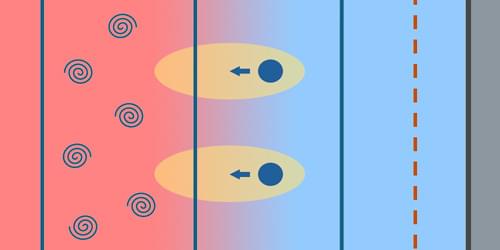
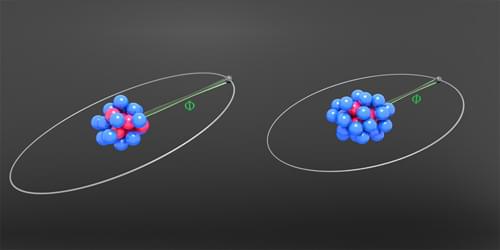

Scientists unlock recipe for Kryptonite-like mineral that could power a greener future
Scientists from the Natural History Museum have unraveled the geological mysteries behind jadarite, a rare lithium-bearing mineral with the potential to power Europe’s green energy transition which, so far, has only been found in one place on Earth, Serbia’s Jadar Basin.
Discovered in 2004 and described by museum scientists Chris Stanley and Mike Rumsey, jadarite made headlines for its uncanny resemblance to the chemical formula of Kryptonite, the fictional alien mineral which depletes Superman’s powers. However, today its value is more economic and environmental, offering a high lithium content and lower-energy route to extraction compared to traditional sources like spodumene.
A team of researchers at the museum have uncovered why this white, nodular mineral is so rare. Their findings show that to form, jadarite must follow an exact set of geological steps in highly specific conditions. This involves a strict interplay between alkaline-rich terminal lakes, lithium-rich volcanic glass and the transformation of clay minerals into crystalline structures which are exceptionally rare.
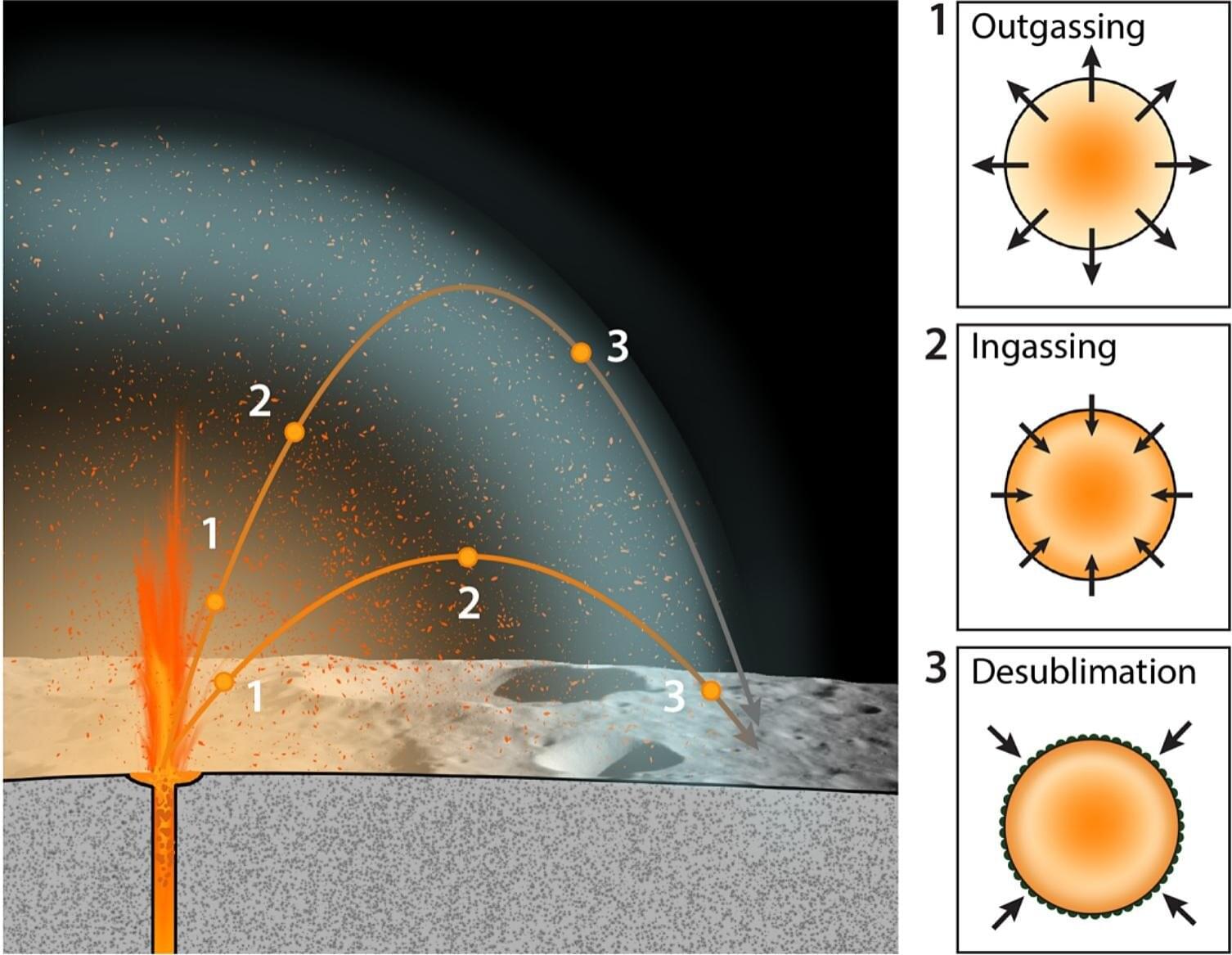
Why the moon shimmers with shiny glass beads
The Apollo astronauts didn’t know what they’d find when they explored the surface of the moon, but they certainly didn’t expect to see drifts of tiny, bright orange glass beads glistening among the otherwise monochrome piles of rocks and dust.
The beads, each less than 1 mm across, formed some 3.3 to 3.6 billion years ago during volcanic eruptions on the surface of the then-young satellite. “They’re some of the most amazing extraterrestrial samples we have,” said Ryan Ogliore, an associate professor of physics in Arts & Sciences at Washington University in St. Louis, home to a large repository of lunar samples that were returned to Earth. “The beads are tiny, pristine capsules of the lunar interior.”
Using a variety of microscopic analysis techniques not available when the Apollo astronauts first returned samples from the moon, Ogliore and a team of researchers have been able to take a close look at the microscopic mineral deposits on the outside of lunar beads. The unprecedented view of the ancient lunar artifacts was published in Icarus. The investigation was led by Thomas Williams, Stephen Parman and Alberto Saal from Brown University.

New study visualizes platinum doping on ultrathin 2D material with atomic precision
A popular 2D active material, molybdenum disulfide (MoS2), just got a platinum upgrade at an atomic level. A study led by researchers from the University of Vienna and Vienna University of Technology embedded individual platinum (Pt) atoms onto an ultrathin MoS2 monolayer and, for the first time, pinpointed their exact positions within the lattice with atomic precision.
The study, published in the journal Nano Letters, achieved this feat with an innovative approach that integrates targeted defect creation in the MoS2 monolayer, controlled platinum deposition, and a high-contrast computational microscopic imaging technique—ptychography.
The researchers believe that this new strategy for ultra-precise doping and mapping offers new pathways for understanding and engineering atomic-scale features in 2D systems.
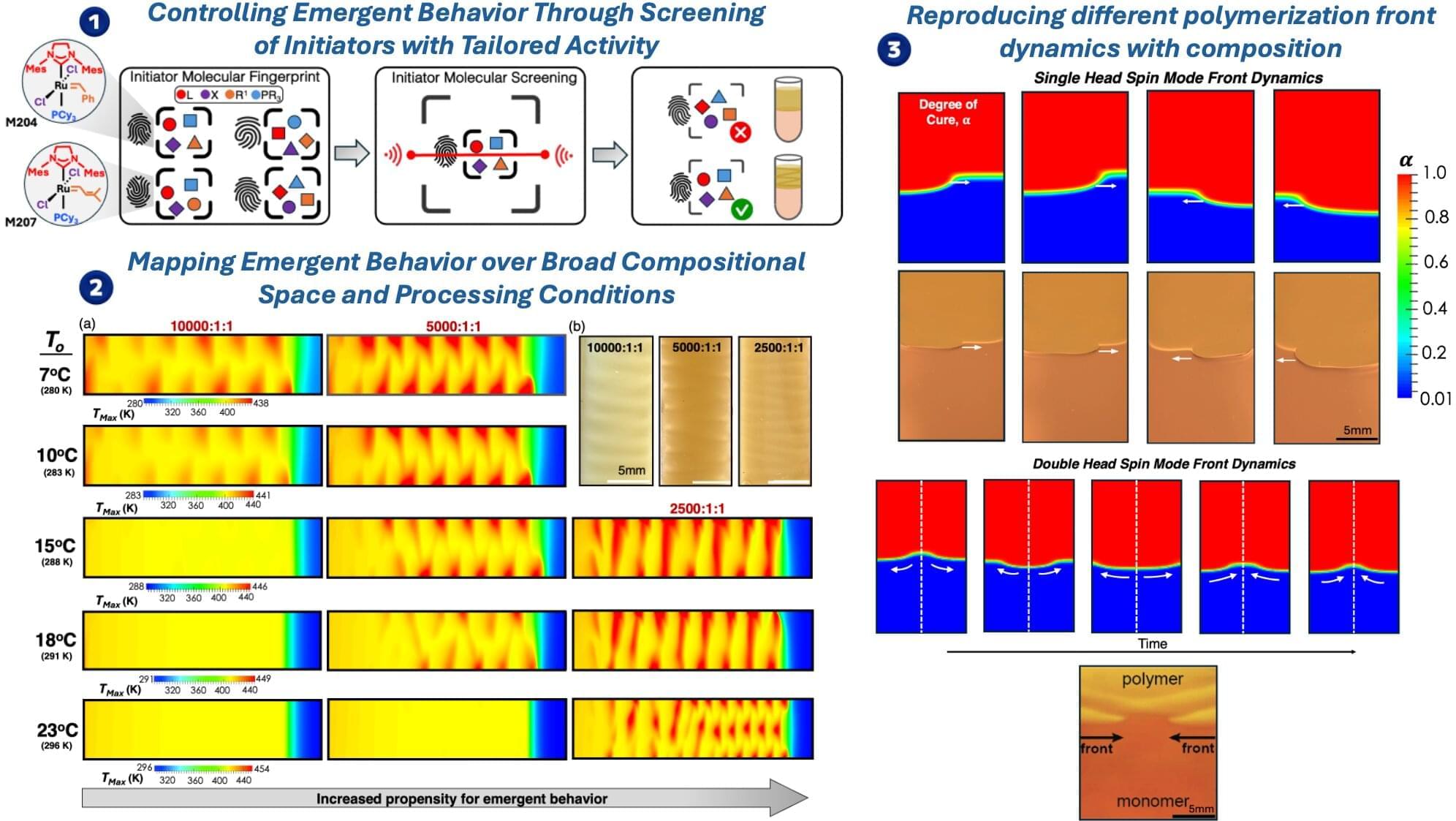
Predicting chemical storm fronts: Framework enables predictive control over patterned polymer formation
Imagine being tasked with baking a soufflé, except the only instruction provided is an ingredient list without any measurements or temperatures.
It would likely take an enormous amount of time, effort and ingredients to bake the perfect soufflé. It would require trial and error—tweaking ingredient measurements, altering the temperature and baking duration—but what if you had a model that could predict the final product before anything ever went into the mixing bowl? It would not only save weeks’ worth of time and resources but could also provide useful details like why and how the soufflé rose and collapsed when it did or why the texture didn’t turn out how you expected.
Researchers at the Beckman Institute for Advanced Science and Technology aren’t quite baking soufflés. Instead, they developed a computational model that digs into the chemical “recipe” of polymer manufacturing to provide predictive control over how materials self-organize to give rise to new textures and properties.
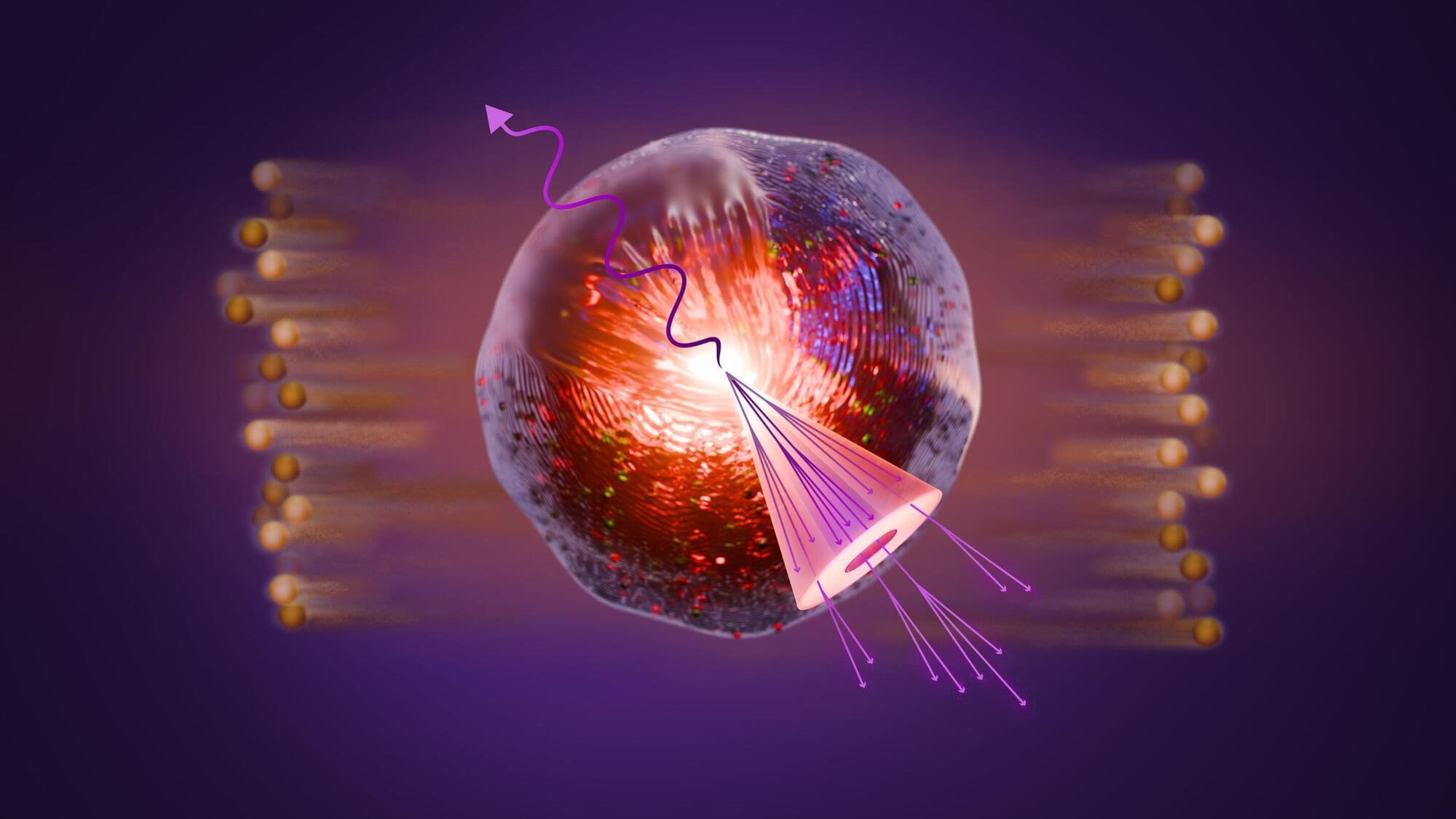
Here’s what happens when quark-gluon plasma ‘splashes’ during the most energetic particle collisions
New data from particle collisions at the Relativistic Heavy Ion Collider (RHIC), an “atom smasher” at the U.S. Department of Energy’s (DOE) Brookhaven National Laboratory, reveals how the primordial soup generated in the most energetic particle collisions “splashes” sideways when it is hit by a jet of energetic particles.
The evidence comes from the first measurement at RHIC of reconstructed jets produced in collisions back-to-back with photons, particles of light. Scientists have long anticipated using measurements of photon-correlated jets to study the matter generated in these collisions. The findings, described in two papers just published in Physical Review Letters and Physical Review C, offer fresh insight into this primordial soup, which is known as a quark-gluon plasma (QGP)—and raise new questions about its extraordinary properties.
“Measuring reconstructed jets gives us unique views of how the strongly interacting plasma responds as the jets move through it,” said Peter Jacobs, a physicist at DOE’s Lawrence Berkeley National Laboratory and member of RHIC’s STAR Collaboration, which published these results. “Instead of focusing on what happens to the jet, we want to turn it around and see what the jet can tell us about the QGP.”

Psychiatric prescriptions linked to higher ALS risk and faster decline
Use of common psychiatric medications (anxiolytics, hypnotics and sedatives, and antidepressants) is linked to a higher risk of developing amyotrophic lateral sclerosis (ALS), and poorer outcomes after diagnosis with shorter survival and faster functional decline, according to a nationwide Swedish study led by Karolinska Institutet

Neural maps used to locate rewards may be disrupted in dementia and heightened in addiction
Imagine you’re walking to work when the unspeakable occurs: Your favorite coffee shop—where you stop every day—is closed. You groggily navigate to a newly opened coffee shop a couple blocks away, which, you’re pleased to discover, actually makes quite a good morning brew. Soon, you find yourself looking forward to stopping at the new location instead of the old one.
That switch probably alters more than just your morning routine. Each time you visit that new coffee shop, the experience likely strengthens a neural map marking the positions of rewarding experiences—a map that can guide you back to those experiences even from miles away.
While the existence of a reward map is familiar from previous work, Wu Tsai Neuro researchers working with mice were surprised to find that the map persists even when mice move many meters away from a treat, and that it updates almost immediately when the location of the treat changes.